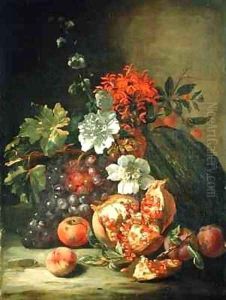Jan Peter van the Younger Bredael Paintings
Jan Pieter van Bredael the Younger, also known as Jan Peter van Bredael II, was born into a distinguished family of artists in 1683 in Antwerp, then part of the Spanish Netherlands. He was part of the Bredael family of painters who were known for their contributions to the Flemish painting tradition. His grandfather, Peeter van Bredael, and his father, Jan Pieter van Bredael the Elder, were both influential painters of their time. This familial background provided him with an artistic environment conducive to developing his skills from a young age.
Jan Pieter van Bredael the Younger primarily focused on genre scenes, landscapes, and battle scenes, which were popular in the 17th and early 18th centuries. He was particularly renowned for his intricate depiction of horses and cavalry, a subject he returned to frequently, drawing on the military conflicts of the era for inspiration. His works often featured a dynamic composition with a strong attention to detail and vivid colors, which made his paintings both lively and engaging.
Despite being less known than some of his contemporaries, van Bredael the Younger's work was appreciated for its quality and craftsmanship. He was part of the larger Baroque movement that dominated European art, and his paintings reflect the era's interest in realism, drama, and grandeur. His legacy is somewhat overshadowed by the more famous members of his family and other Flemish artists of the time, but his contributions to the genre of battle painting and landscape are notable.
Jan Pieter van Bredael the Younger's career spanned the late 17th century and the early 18th century, a period that was rich in artistic development in the Low Countries. He continued the family tradition of painting, and his works were collected by art connoisseurs and patrons of the time. He died in 1735, leaving behind a body of work that continues to be studied and appreciated for its contribution to the Flemish painting tradition.
